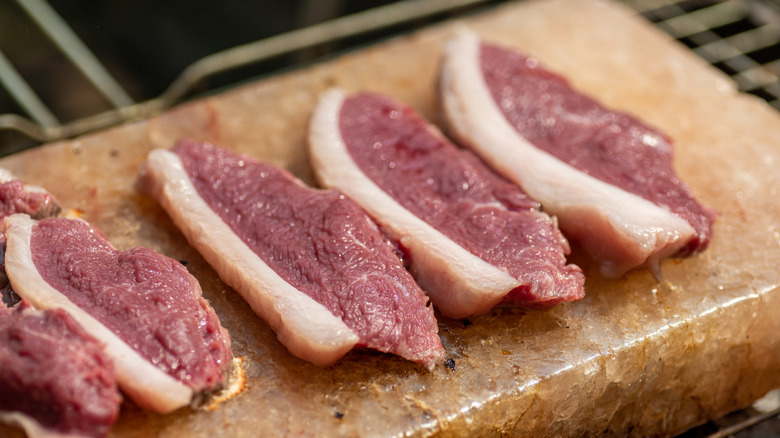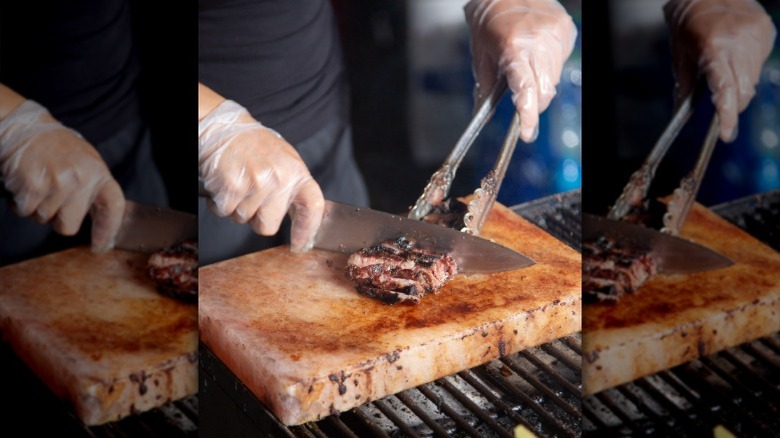Is It Ever Worth Using A Himalayan Salt Block On The Grill?
There are all kinds of tools and gadgets companies are trying to convince us we need as part of our grill kit, but not all of them are worth the time or money. One grilling trend that rose to prominence in the 2010s was the Himalayan salt block. To find out if it's worth the trouble, we reached out to Scott Groth, chef and founder of I'd Rather Be a Chef.
"The unique thing about cooking on a salt block is that steaks and chops cook very similarly to cooking them in a cast iron pan," Groth told The Takeout. "The sear is a nice, hard sear and there is no need to salt the meat while it is cooking." We already know salt is the most important ingredient in the kitchen, but the technique for grilling with a salt block isn't without its drawbacks.
"The thing to remember about cooking on a salt block is that they are quite delicate, despite their heavy weight and appearance," said Groth. By delicate, he means the salt block can easily break. That can be from simply dropping it to the ground as it slips from your fingers, but you can also break it by simply heating it up too quickly. "It's important to put the block on a cold grill and heat the grill gradually," he said. "Otherwise the stone might crack." Alright, so we get a nice sear (and reverse sear, if necessary) and all we need to do is handle it carefully; sounds easy enough. Well, it turns out there's more.
Salt blocks are a lot of extra work, but do provide a solid sear
When purchasing a salt block, the process seems simple. Instead of placing the steak directly on the grill, you simply lay it on top of the salt block when it's hot and ready. But as Groth put it, "Salt blocks do require quite a bit of work."
"They tend to pick up odors quickly, so they must be cleaned properly and stored in a cool, dry area with good ventilation," Groth said. "Never store it in a plastic bag." He also had some ideas on how to maintain the salt block's quality. "A good rule of thumb is to only cook on one side of the salt block," Groth continued. "This will extend the life of the block and ensure that one side remains flat so it will be level on the grill."
Even after you're done grilling, "they should be cooled gradually and cleaned without water." Water will erode the salt block, which is no good. It's the same reason Groth doesn't use marinades, since they'll dissolve the the thing (guess that means these steak cuts are out).
It's not all bad news, though. "The flavor from this type of sear is delicious," Groth told us. But the increase in flavor does come at a cost of extra maintenance. After the salt block has been cooled, Groth will "scrape the block to remove food residue, then use a damp cloth to clean it up gently." Even with all this extra effort, you still need to season your meat.

